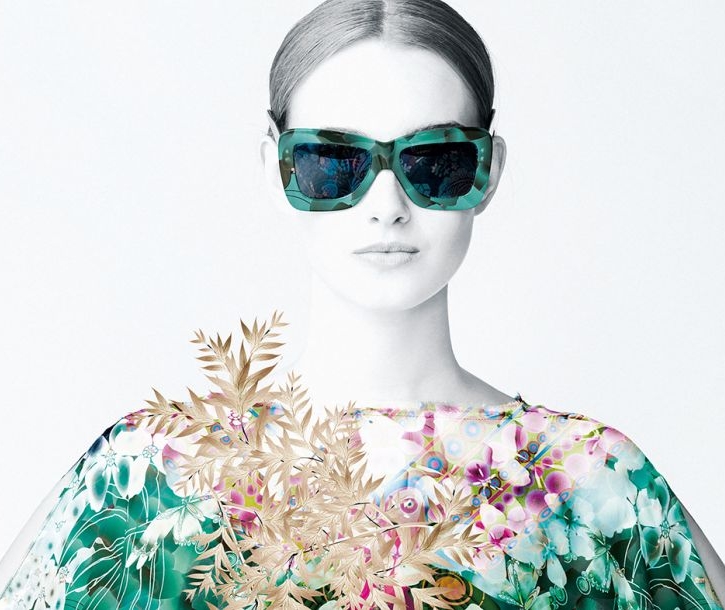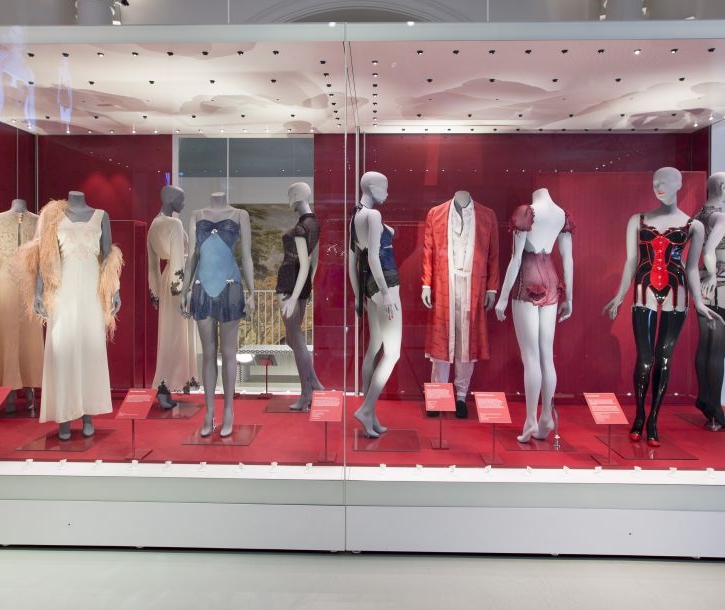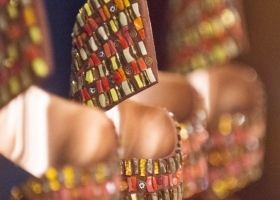
The Best ofIntima & Swim Edit
Women in Textiles
20 June 2016
Textiles follow society’s evolution; they see the transformations in our tastes and values.


They tell the story of the female form and highlight the new roles that women play, which is more than just that of a consumer.
This is the idea behind the latest exhibition running until October 9 2016 at the Musée de l’impression sur Etoffes de Mulhouse, which has already played host to a number of fabulous exhibitions. “Women’s Stories” presents and honors the most influential and enterprising women within the world of textiles and fashion from the middle of the 18th century until today. These are fashion icons, renowned artists and talented creatives, who have played their own role in the history of fabrics. As the museum is honoring these women its only right to highlight one of France’s most illustrious female creatives, Chantal Thomass, who is the curator of the second exposition entitled “Impertinence”.
Women’s Stories

Women in Manufacturing
The work of women has long been hidden in the shadows and once married their role was primarily divided into that of wife and mother although they’d often take on agricultural, sales and artisinal jobs. Women also worked in the domestic services where they had no rights or were employed as shop assistants, but by the 18th century the creation of painted fabrics quickly made their work more visible. With the development of the first machines in manufacturing, women started being employed to use them. In Rouen, Mulhouse, Wesserling, Jouy en Josas, and Switzerland manufacturers called for a large workforce of low-skilled women who could undertake menial tasks; thus the role of pinceauteur one that was exclusively reserved for women was created. These women would have to paint yellow on blue to create green, or apply indigo onto a fabric with a paintbrush. Others took on the role of picoteuse; they would chip away at planks of wood to create subtle indents in the material. These tasks, however, were considered lowly and some of the women would also take on other roles that held a higher status.
In the 18th century female designers began to emerge and they also started assuming the role of engravers. During the 19th century industrialisation meant women were needed on a large scale. And because new machinery made the tasks traditionally reserved for men less physically demanding and therefore, more accessible, women started to take on these roles. The rise in the use of machinery sparked a gradual shift in female roles; from that of the domestic to creatives in textiles.
In the 19th century it was rare to find a woman who had a career. However, Thérèse de Dilmont (1846-1890), was an exception. She was enlisted by Jean Dollfus, owner of Dollfus Mieg & Cie (DMC) to help him increase sales by editing books that would inform the public about the women that work in textiles at DMC. Thérèse de Dilmont published over 100 guides, which were translated in 17 languages. She owned stores in Vienna, London, Paris and Berlin, but in 1889 Thérèse married and cut ties with DMC, thus ending her professional career. Four years earlier in 1885 the Société Industrielle de Mulhouse launched an intiative that created a professional school of art for young girls. While undertaking an apprenticeship in industrial design, these young ladies also worked as seamstresses or in accounting. They were able to undertake secretarial work within the factories. The school unfortunately closed its doors during the two world wars.
Emancipation and the 20th century
Following
the end of World War I the female emancipation movement began to affect
all domains. Women became the creators and many of them started
businesses that even made them famous. This exhbition pays homage to
some of those women. In the first quarter of the 20th Century the Wiener
Werkstätte women, a movement made up of Vienese artists, started to
create printed fabrics for clothes and interior design. Some became
more famous for these fabrics than they did for their paintings, in
particular Sonia Delaunay (1885-1979) and Sophie Taeuber-Arp
(1889-1943). These two were pioneers, in respects to abstract paintings
and Dadaism who tried to break down the barriers between art (paintings,
applied arts, poetry, fashion, archecture and textiles). Before her
disappearance in 1979, Sonia Delaunay for whom, fashion was a medium in
which she could breathe new life into her work, gave some of her most
famous pieces to the Musée de l’Impression sur Etoffes. The “Women’s
Stories” exhibition offers an opportunity to present her lesser-known
works.

Textiles created by women
Fabrics and fashion go hand in hand, and women were about to enter into the world that was once exclusively inhabited by men. Gabrielle Chanel, famously known as Coco Chanel, fit into this world and is an undisputable iconic figure of the sociological shift. In fact from the moment Coco wore masculine clothes in 1910, she made tweed, jersey, smocks and most importantly trousers accessible to all. The museum has used this opportunity to delve into the Chanel archives to present some of her collections. The 20th century marked a deep transformation: women were creating designs for clothing as well as pieces of furniture in grand design houses and for fabric manufacturers. The name Brisson de Méré also made a mark on fashion between 1950 and 1980: she worked for Swiss weavers and Lyon’s silkmasters. Andrée Brisson de Méré went on to supply the biggest names specializing in high fashion fabrics. Having founded her own business in 1956 under the name “Tisseur B de M” she went on to work with the most prestigious fashion designers: Christian Dior, Hubert de Givenchy, Yves Saint Laurent, Nina Ricci ou Paco Rabanne. In the furniture sector pride of place is given to Paule Marrot, Primerose Bordier, Lizzie Derriey ; the women that have had the most impact in the world of decoration and the creation of textiles.
“From the moment Coco wore masculine clothes in 1910, she made tweed, jersey, smocks and most importantly trousers accessible to all.”
Impertinence by Chantal Thomass

The Musée de l’Impression sur Etoffes de Mulhouse is also hosting a retrospective curated by the famous fashion designer Chantal Thomass. Hundreds of her ready-to-wear pieces, lingerie items and accessories are presented in an exhibition entitled “Impertinence”. Impertinent is what Chantal Thomass was when she launched her brand “Ter et Bantine”, and that is what she remains with her eponymous brand. Her work is unique, full of fantasy and humour – it’s simply her. It’s chic, elegant and Parisian, whether in ready-to-wear or lingerie she never fails to turn conventions on their heads. She shifts and reinterprets, she dares to seduce and says to hell with taboos. She borrows details from menswear, reworking the suit and masculine jackets, adding military corsets and ties. Chantal Thomass was the first designer to send her underwear down the catwalk. And because of her lingerie became a fashion accessory: no longer hidden, but exposed and thanks to Chantal Thomass, underwear took over. Several pieces of transparent black lace open the exhibition in anticipation of what’s to come. You are then free to explore several reccurent themes that are dear to the curator. You may come across some women from the 80s and 90s, the romantics, troubled lolitas, fake innocence, femme fatales and finally enticing maids and a saucy bride. And all this is wrapped up in materials, colours, prints and accessories all waiting for you to discover.
“She never fails to turn conventions on their heads. She shifts and reinterprets, she dares to seduce and says to hell with taboos. ”
Related articles:
Copyright 2024. All right reserved - Terms




















